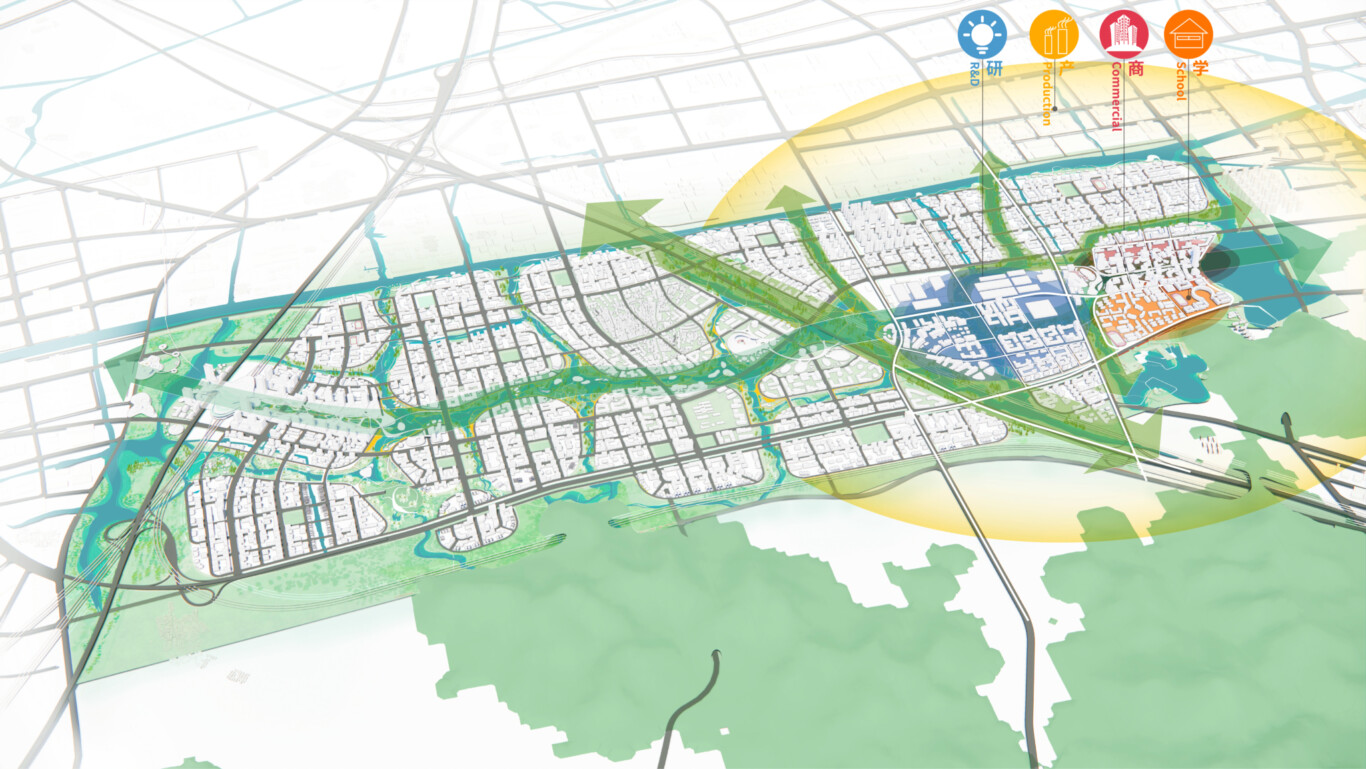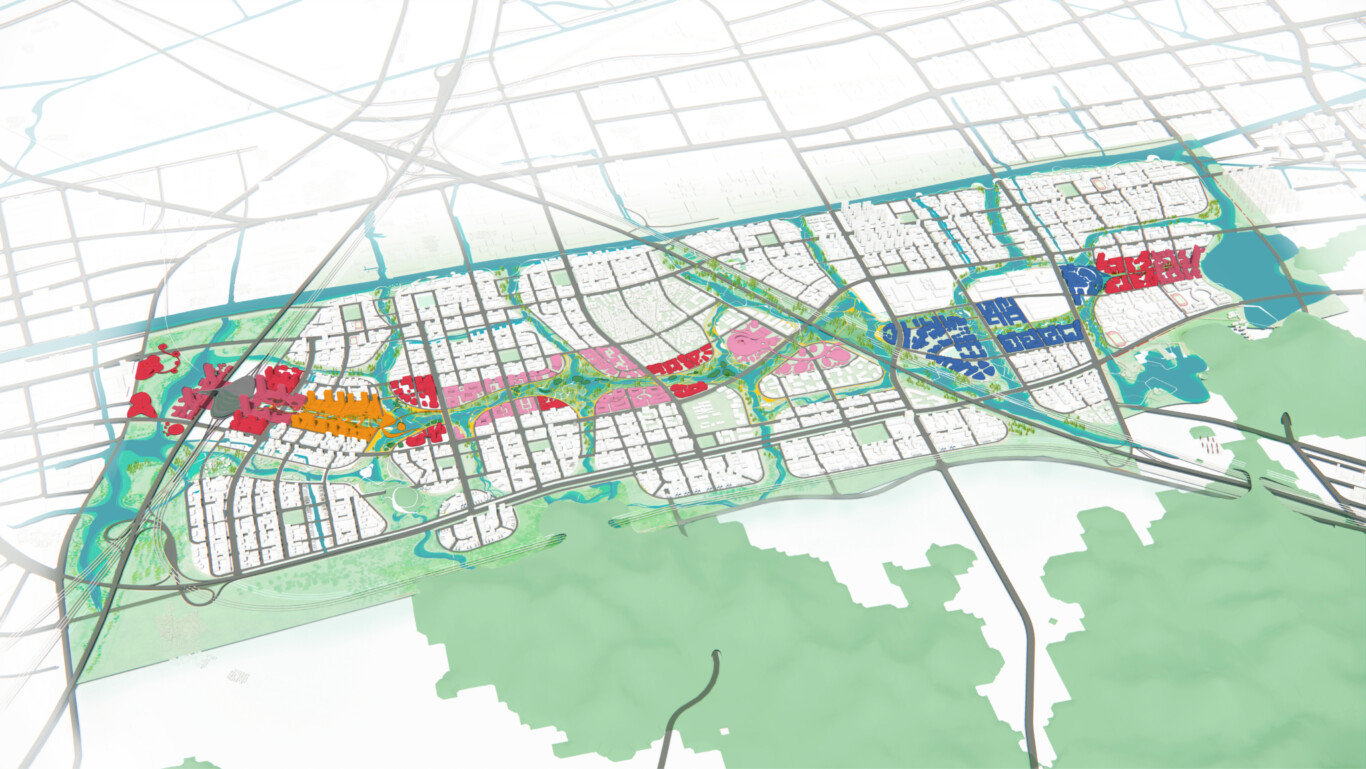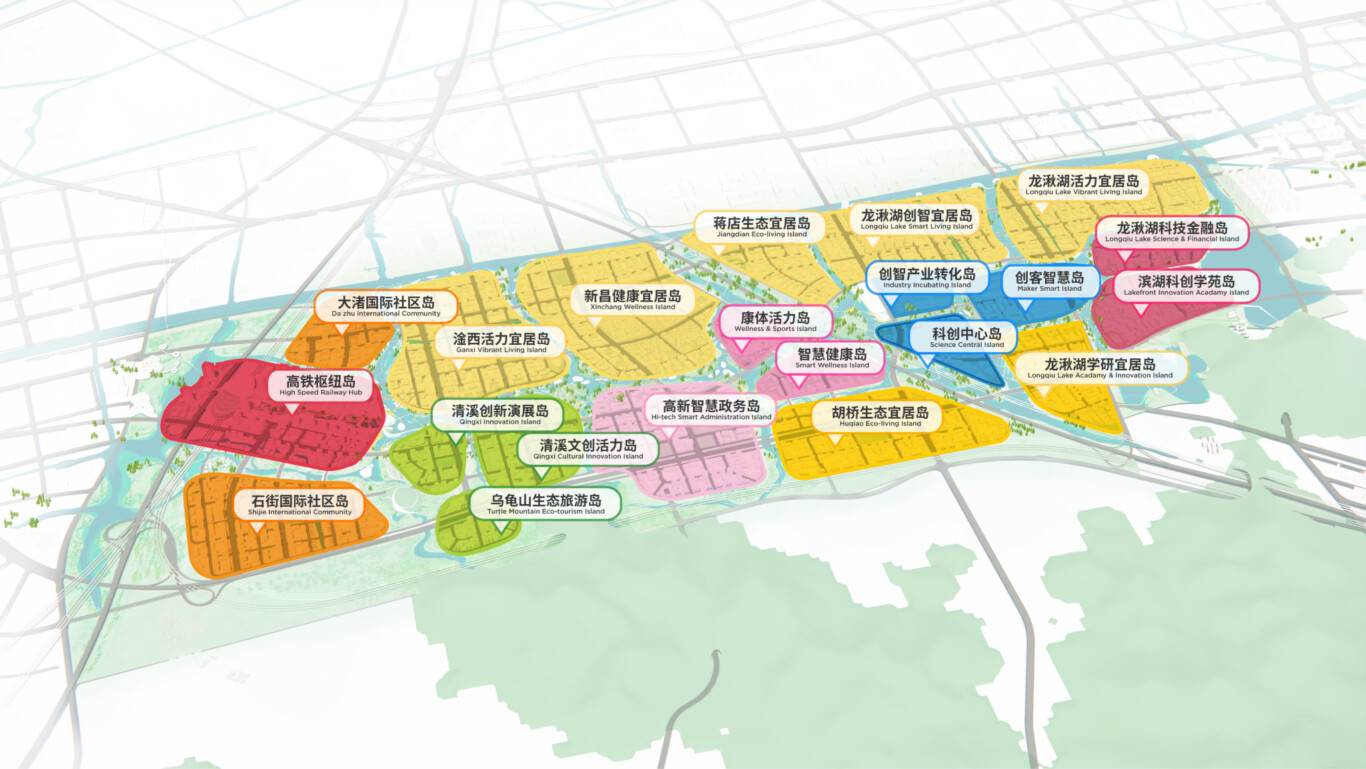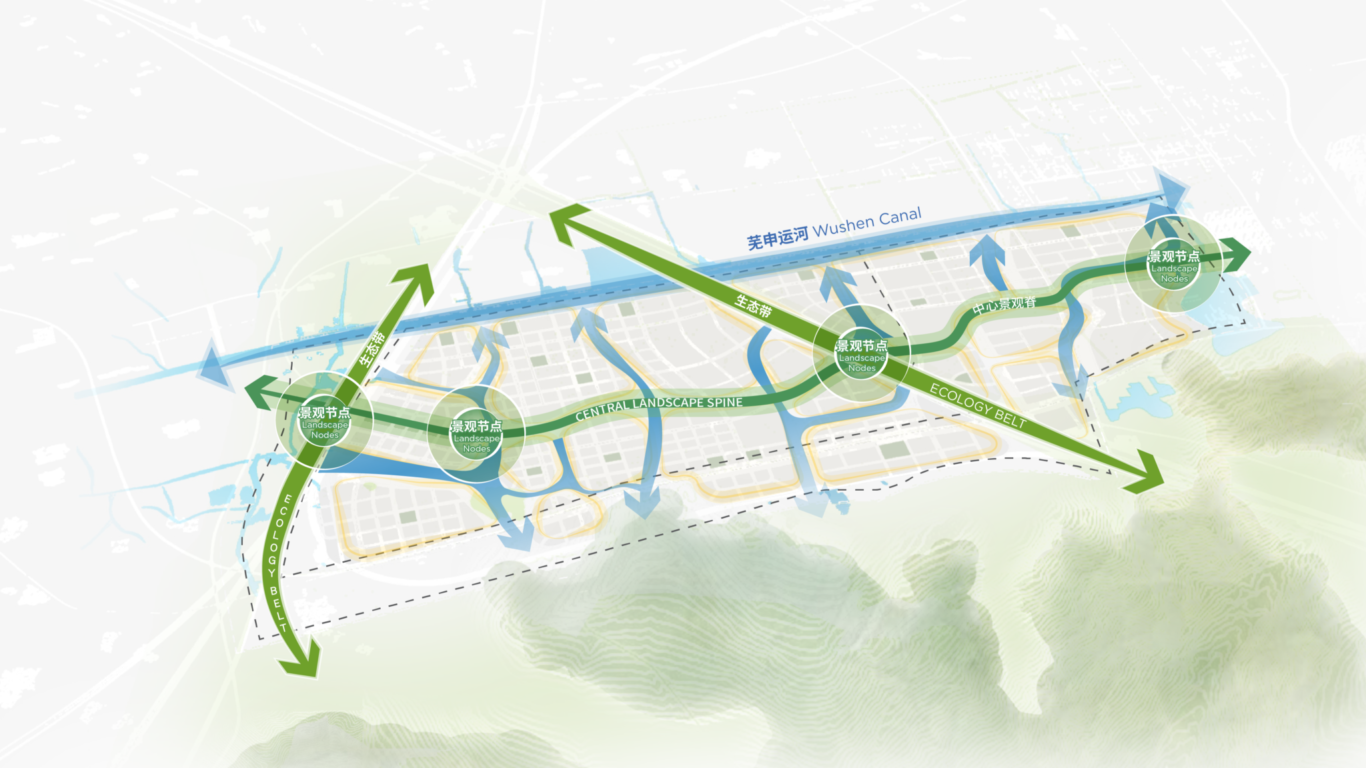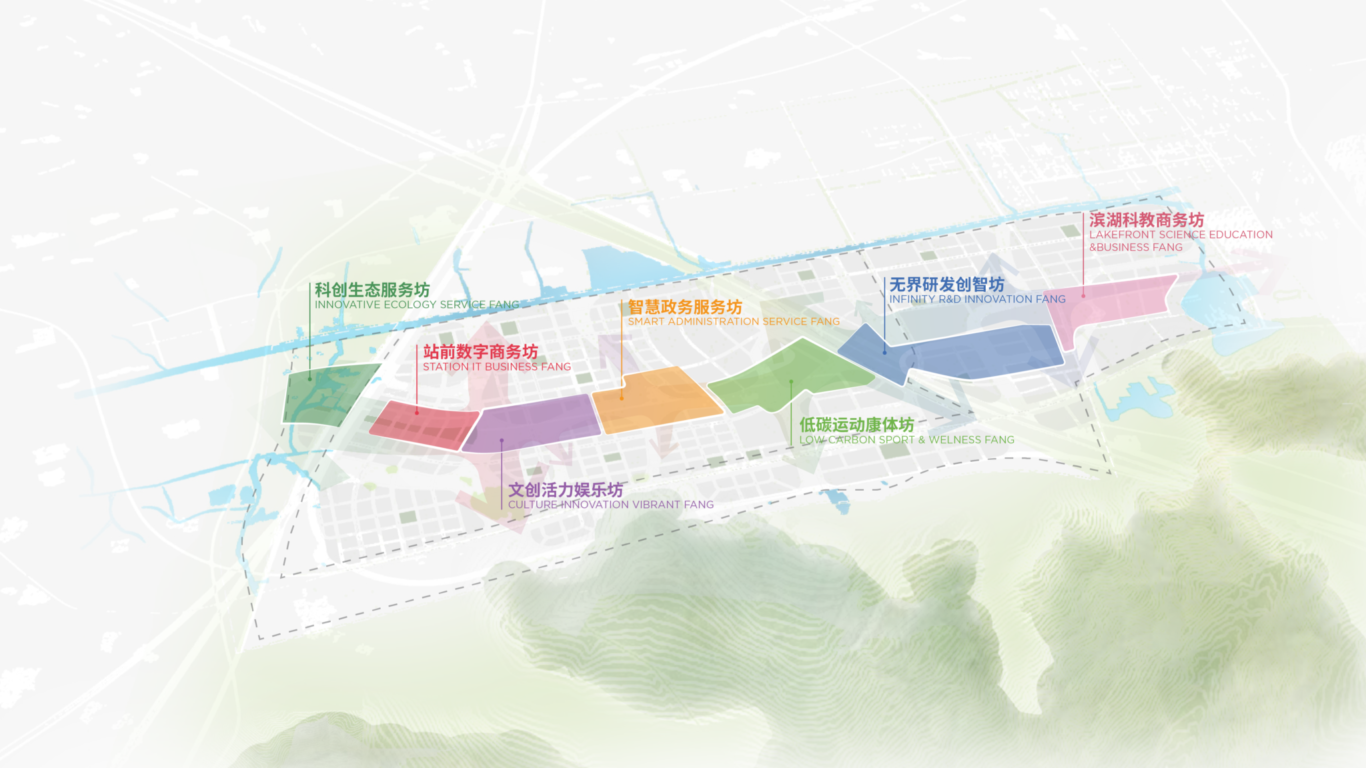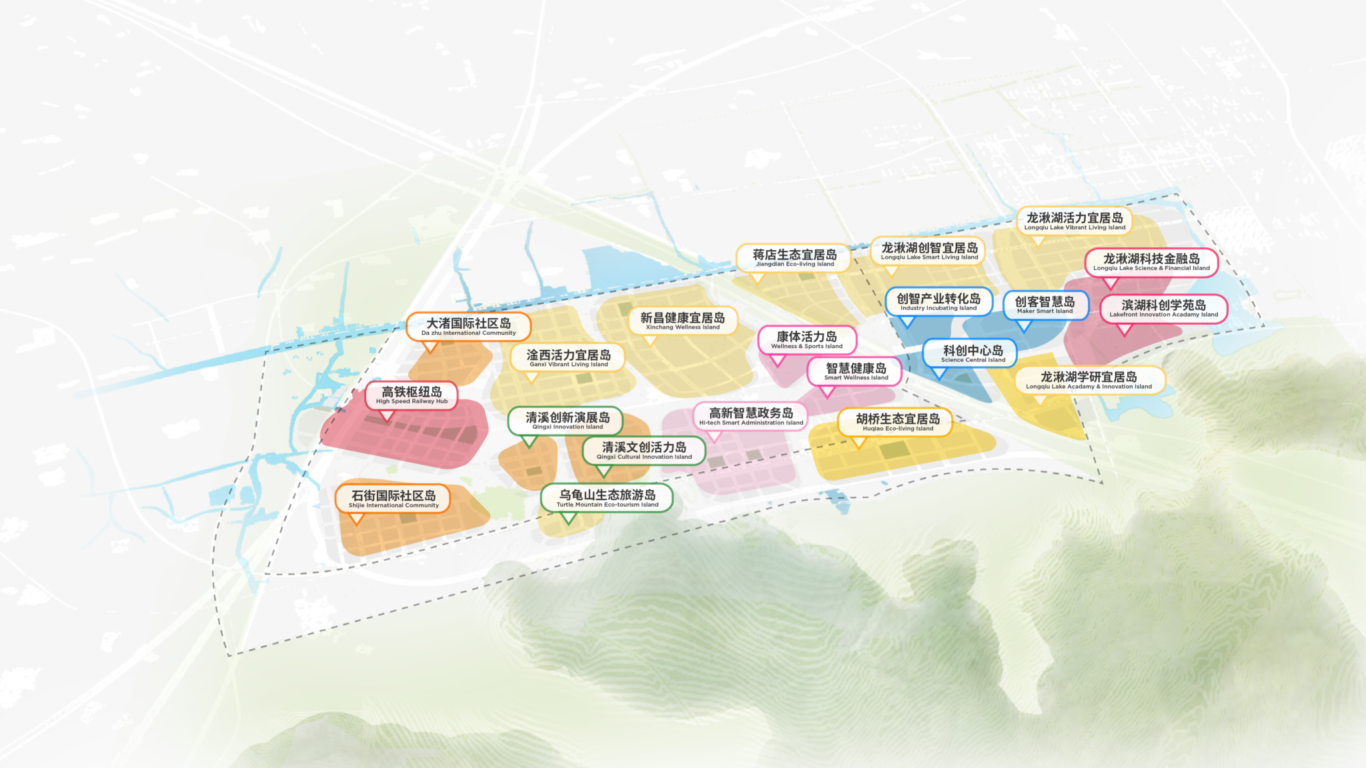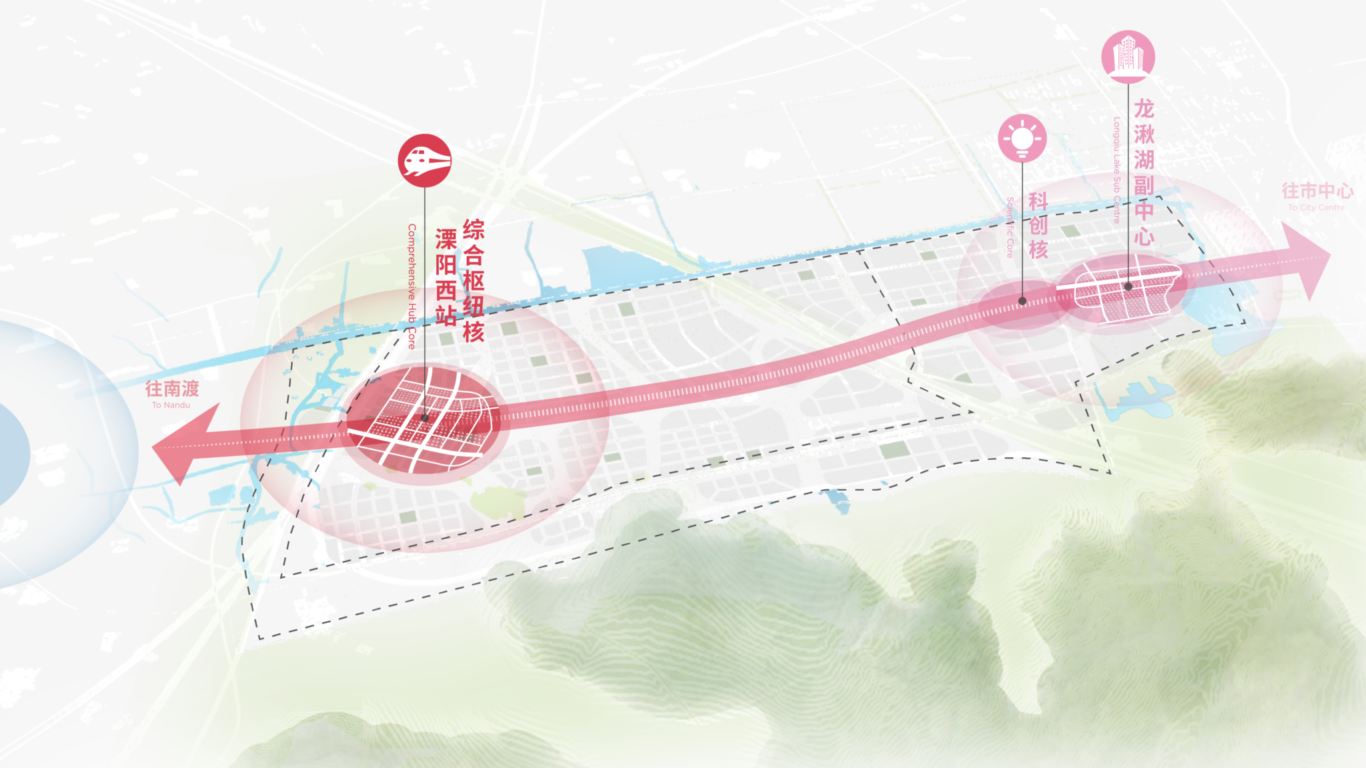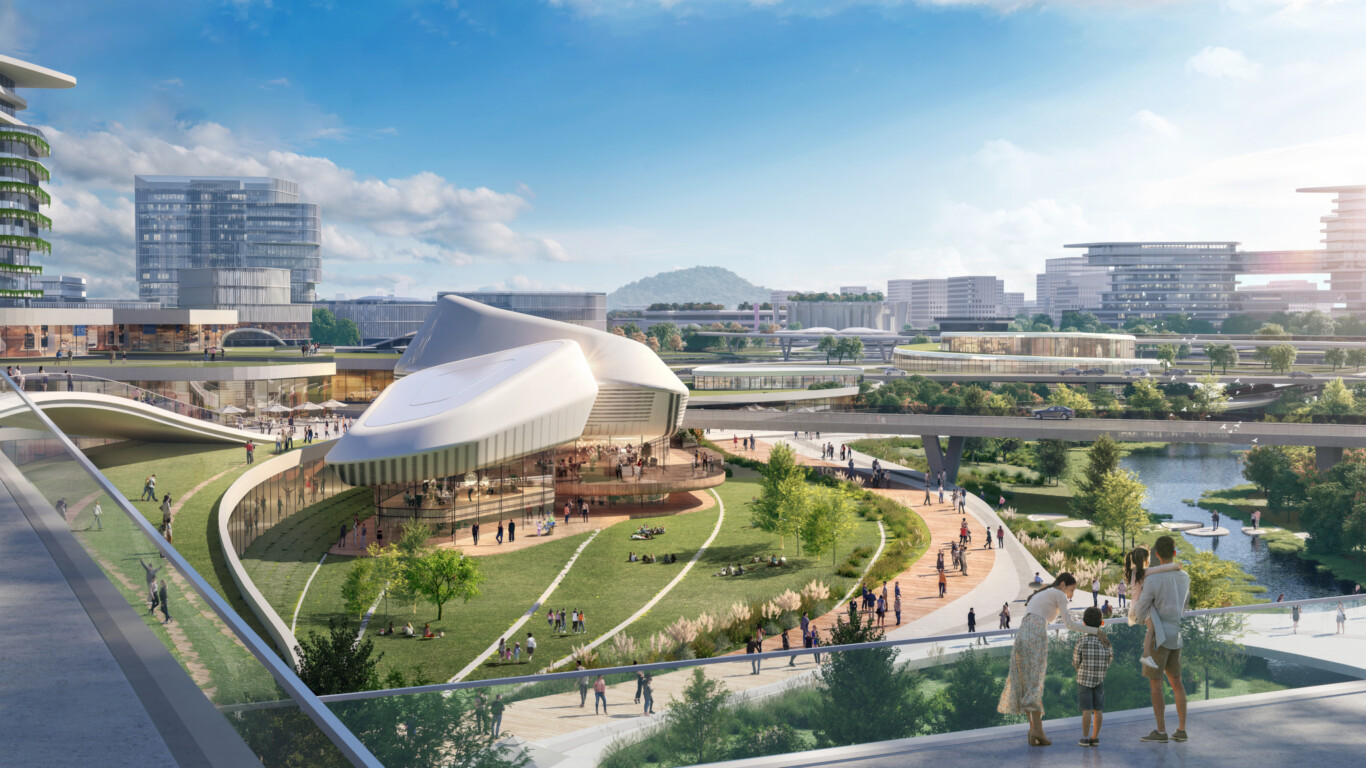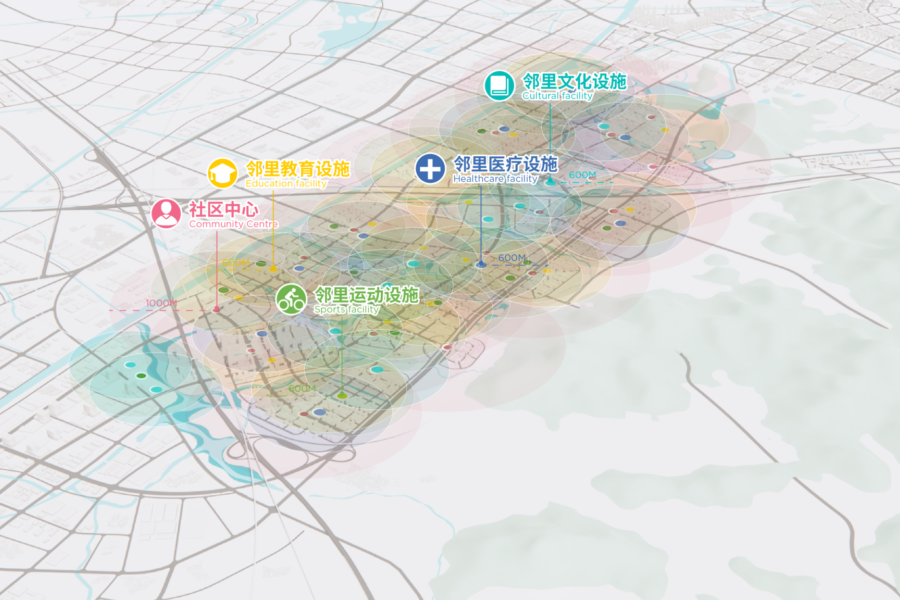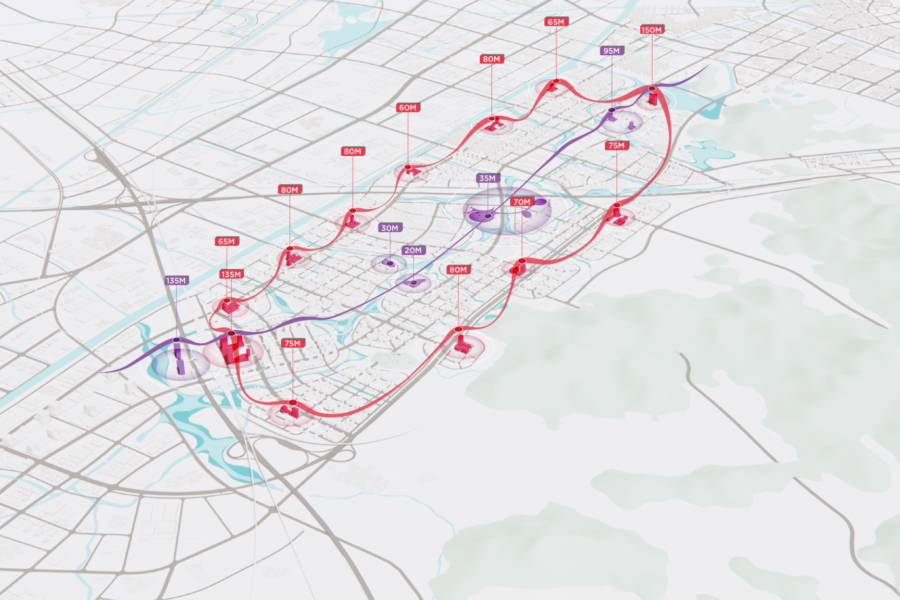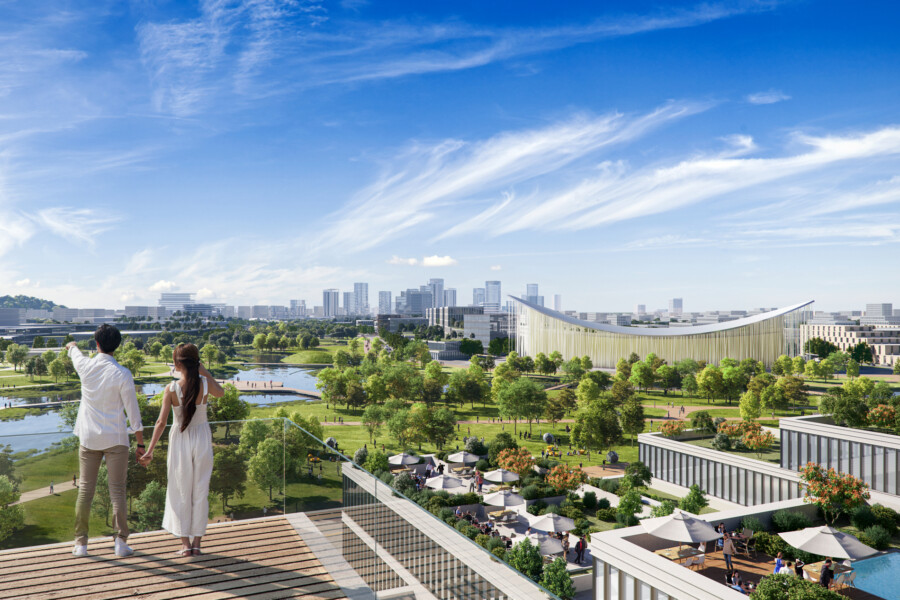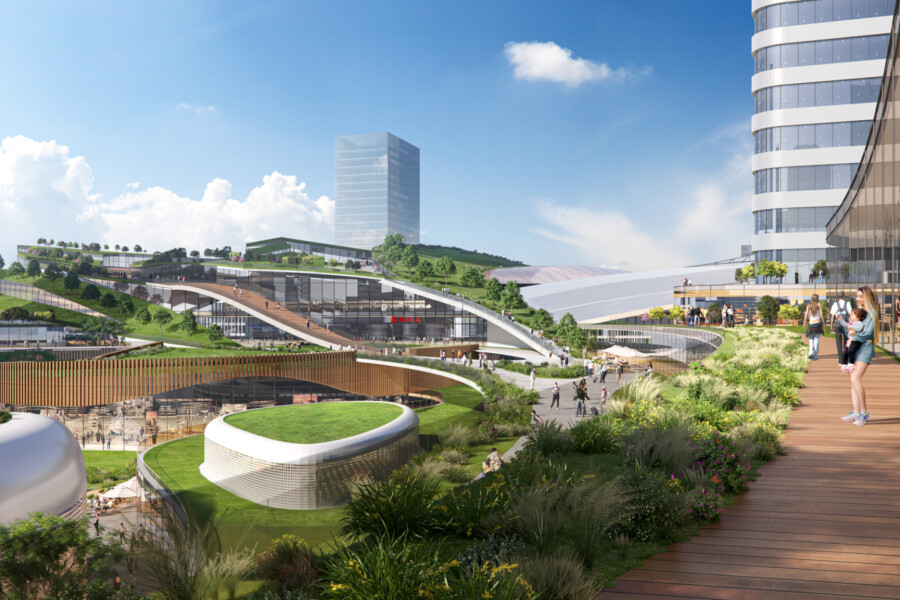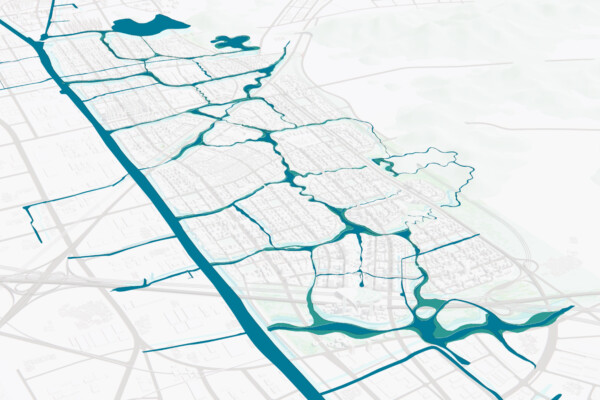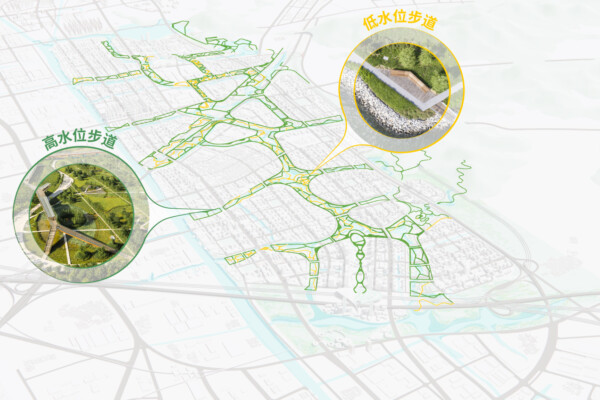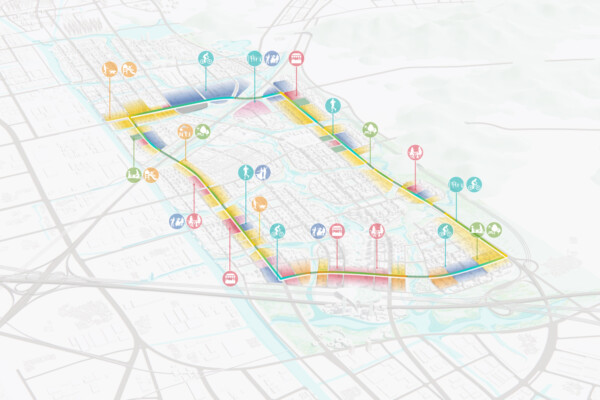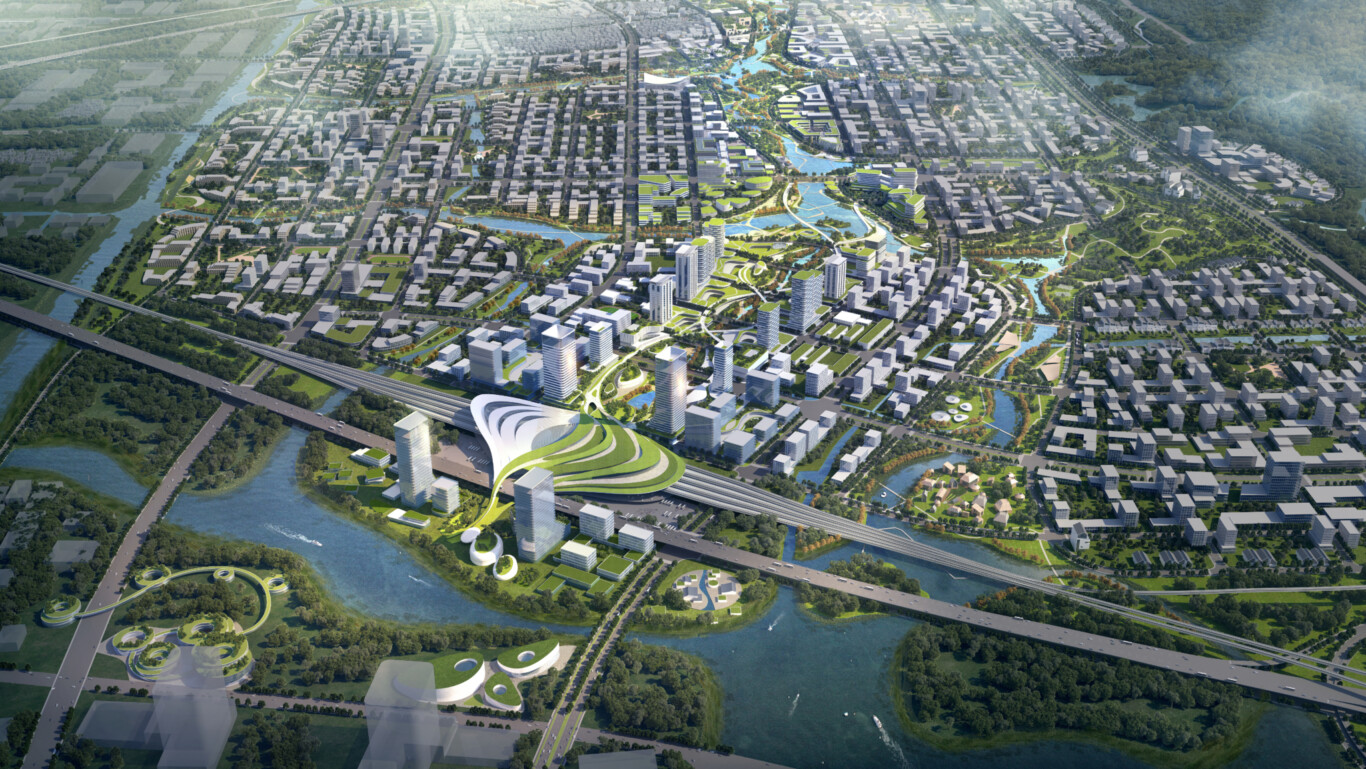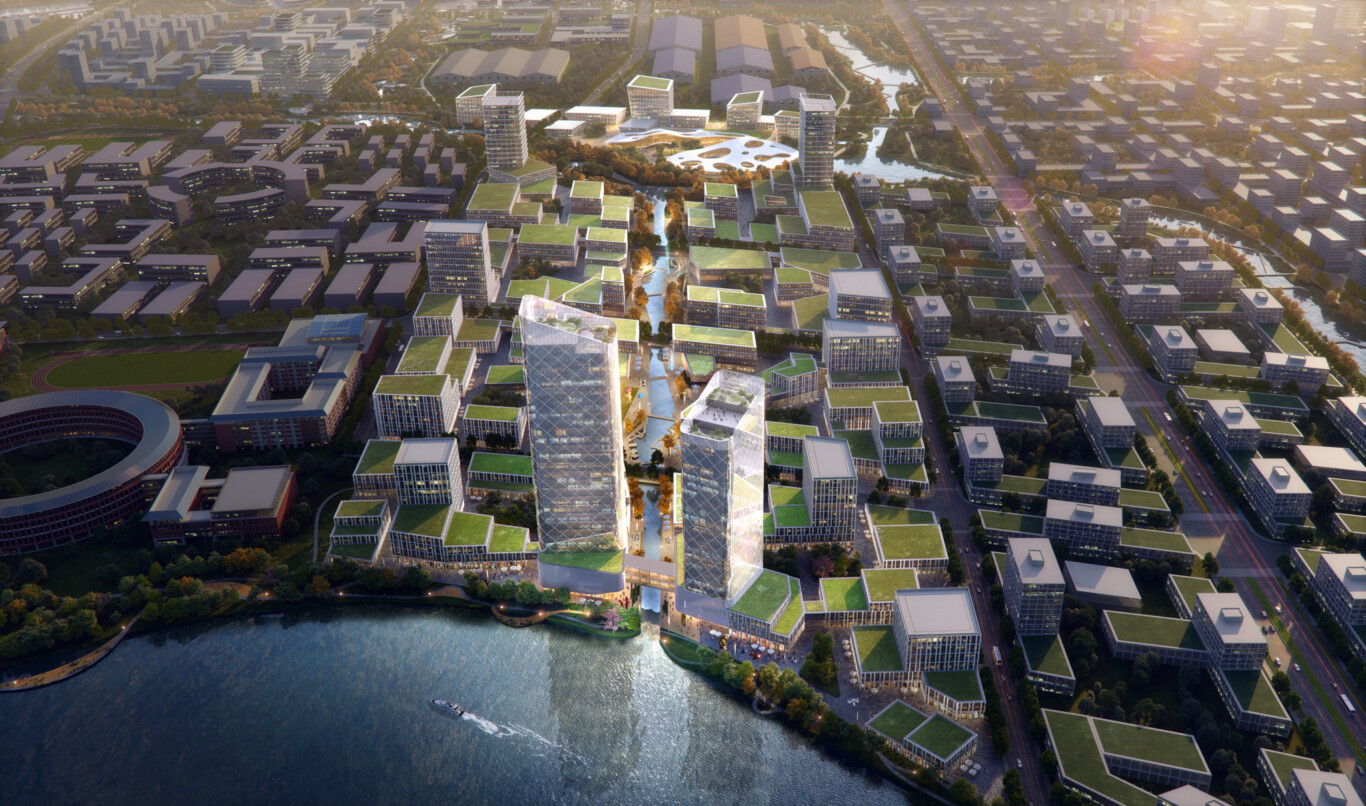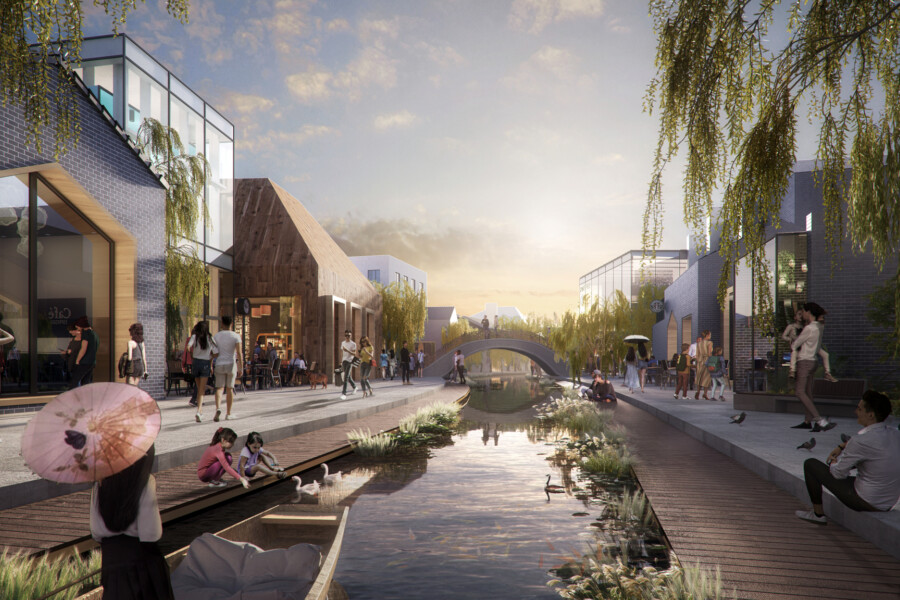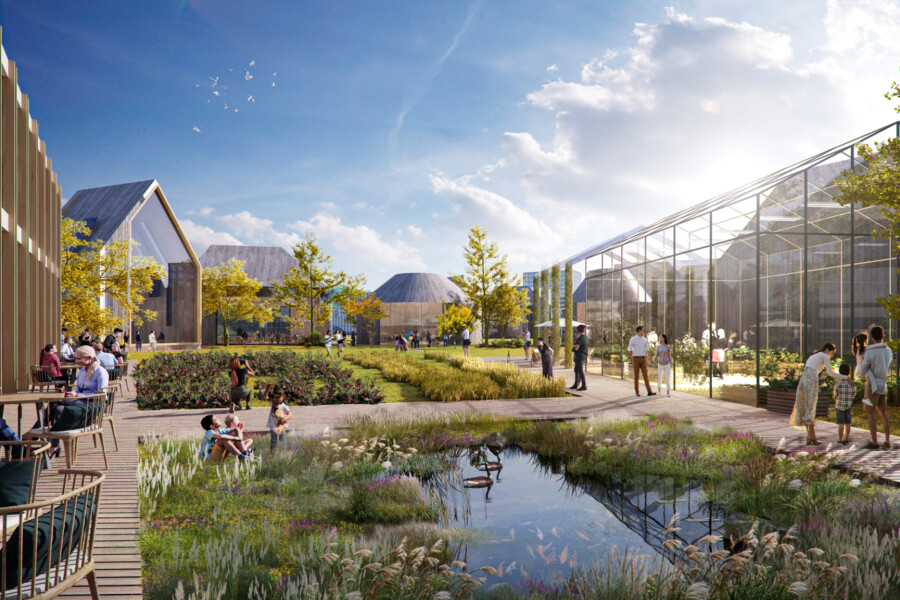
The Sci-Tech future of Liyang
Liyang is where the Suzhou, Zhejiang and Anhui Provinces meet. Chapman Taylor’s Shanghai studio has created a design concept that will strengthen its reputation for science and innovation, whilst creating vibrant shared spaces for its residents and visitors.
The project is located to the north of Lion Mountain and south of the Laishui River. The water of the Laishui River surrounds the city. A high-speed railway hub integrates the station, city, people, scenery and culture. The designs will fully respect the ancient culture of the area whilst creating a dynamic future.
Challenges and Design Concept
The Liyang site is a very important strategic location because of its long history, rich culture and strong transportation links to the wider region. The design concept is defined by the organic arrangement of north-south and east-west green belts, which create a series of vibrant city-island clusters. To test this design concept, four questions were addressed:
1. How can the design of the Longqiu Lake Science and Technology Hub be strengthened?
By relating this hub to the lake, the north-south green belts, and the waving parkways through the city, a series of islands are created with R&D, education, production and commercial uses. In conjunction with the residential communities, an ideal environment for innovation within a blue-green landscape context can be created.
2. How can the TOD hub integrate with the city?
The railway station is clearly the anchor to the west side and will serve as a landmark. It must also fully connect and be part of the city, both in terms of its form and its functions, so, it becomes a natural part of the comprehensive city structure.
3. How can the people of Liyang maximise their enjoyment of this dynamic new city, using excellent public spaces?
By creating a series of island clusters that have multiple functions and proposing multiple events and functions for the greenways.
4. How can Shanshui culture be introduced into the structure of the new city?
In abstract terms, the city is created and defined by the mountains and the blue-green parkways which wave through the city. These create the city structures like an expression of an exquisite Shanshui painting, showing the character of the Chinese landscape. So, the project is integrated and bedded into the local culture.
Planning the urban structure.
Firstly, full consideration was taken of the existing natural elements. The site is located on the north side of Lion Hill so the terrain is relatively higher on the south. Within the site, there are a number of north-south waterways and many scattered ponds.
On the basis of preserving and restoring the hills and the main water system, an overall structure is formed with a main east-west axis and several north-south corridors. This ”one corridor and eight belts” structure shaped the city into multiple island-like clusters, creating a unique urban environment for Liyang, integrated with hills and water.
Urban Function and Transport Planning
A functional structure was created, of “two cores and one axis”. Two cores serve as the main engine to drive the development of the whole area, with the comprehensive hub core led by West Liyang Station on the west and the Longqiu Lake financial and innovative core on the east.
The ecological sharing axis connecting the two cores is equipped with shared services such as business and conference, science and technology, sports and education, and ecological health facilities, forming an integrated urban corridor linking the two cores and radiating surrounding areas.
Based on the upper planned road network with four horizontal and four vertical arterial roads, the number of branch roads was increased within each cluster in order to build an efficient road network structure.
For public transportation, a medium-capacity bus corridor from Liyang city area will connect the city centre, Longqiu Lake and West Liyang Station. A public transport system with two rings and multiple radiations within the site would achieve full coverage of bus services.
Architectural Design
The main design concept is inspired by Liyang Shanshui culture, developing a rich range of architectural typologies and styles.
A wide variety of public services will be placed in each cluster to create a 15-minute living circle to serve the local residents.
Landmark buildings within the clusters will also create a staggered and balanced urban skyline.
Landscape Design
The Laishui River becomes a highlight point in shaping the landscape of the new city, reflective of the natural landscape that came before. The design preserves the current water network and respects the existing topography, reducing the amount of dredging and filling and creating a five-level flood resistance system to build a flood-adapted city.
A vertical greenway system is built along the hill and water, with elevated greenways providing easy access between adjacent clusters and lower greenways creating space close to the water.
A 9km Innovative Loop connects West Liyang Station and all other islands, as a supplement to the multi-level greenway system.
Liyangxi Station Hub.
The high-speed railway station will become a vibrant centre of the west side of the city, along with the TOD core area.
The urban core seamlessly integrates the high-speed railway station, and the commercial and peripheral areas. It also adopts a down-and-out passenger flow pattern to facilitate travel and arrival at the station, making the station a very convenient means of transportation.
Central leisure Xinchang Axis.
The Xinchang Axis links the Longqiu sub-centre and Liyangxi Station. It is also the Ecological Flood Storage Belt that maintains the safety of the surrounding people's properties. Here, the colourful vegetation and landscape elements are inspired by classical Chinese gardens, using ancient gardening techniques to integrate the meandering mountains and tranquil rivers with the urban landscape.
Sci-Tech Longqiu Lake.
Longqiu Lake City Centre is an important gateway of the masterplan facing the city of Liyang, adjacent to the Xianren Mountain range and the waters of Longqiu Lake. Here, there is a visual experience of a cascading and interlocking landscape with buildings, mountains and water.
